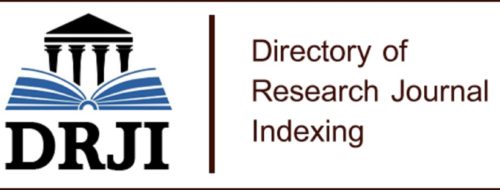Öz
Son zamanlarda otomatik katılım sistemi ile Türkiye’de ilgi odağı olan Bireysel Emeklilik Sistemi (BES) sistemi birçok ülkede uygulanan bir alternatif emeklilik sistemi ayağıdır. Etkin uygulamanın olduğu ülkelerde BES sistemleri tasarruf oranına ciddi katkılar sağlamaktadır. Ayrıca kurumlar farklı yöntemlerle bu fonların performanslarını ölçmekte ve bu sayede katılımcıdaki risk ve getiri algısını değiştirmeyi hedeflemektedir. Bu çalışmanın amacı emeklilik fonlarının performans analizi için kullanılmamış olan Omega oranı ile emeklilik fonları için bir performans analizi sunmaktır. Omega oranı; minimum kabul edilebilir getiriye karşılık gelen bir eşiğe göre getiriyi iki alt bölüme ayırmaktadır. Bu ölçü kazanç beklentisi (getiri eşiğin üzerindedir) ile kayıp beklentisi (getiri eşiğin altındadır) arasındaki oran olarak tanımlanmaktadır. Bu çalışmada emeklilik fonlarının performans analizi için kullanılmamış bir oran olan Omega oranı ile altın, hisse senedi, borçlanma araçları ve değişken emeklilik fonları için yeni performans analizi sunulmaktadır. Çalışma Omega oranın da diğer oranlar gibi performans analizinde kullanılabileceğini göstermektedir. Dört adet emeklilik yatırım fonu çeşidi için yapılan Omega performans analizinde en yüksek Omega rasyoları borçlanma araçları emeklilik fonlarınındır. En düşük omega performansları hisse senedinde gözlemlenmiştir.
Anahtar Kelimeler
Bireysel Emeklilik Sistemi Fon Performansı Omega Oranı Türkiye
Etik Beyan
Çalılmanın sebebiyle etik kurul izni gerektirmeyen çalışmalar arasında yer aldığını beyan ederiz.
Destekleyen Kurum
Yok
Proje Numarası
yok
Teşekkür
yok
Kaynakça
- Acerbi, C. (2004). Coherent representations of subjective risk aversion. Szegö, G. (Ed.), Risk Measures for the 21st Century. Wiley, New York.
- Akpinar, O. (2014). Performance evaluation of pension funds and mutual funds in Turkey and the timing ability of fund managers. British Journal of Economics, Finance and Management Sciences, 9(1).
- Alptekin, N. (2009). Performance evaluation of Turkish type a mutual funds and pension stock funds by using TOPSIS method. International Journal of Economics and Finance Studies, 1(2), 11-22.
- Aygören, H., Uyar, U. & Kelten, G. S. (2017). Performance of the pension fund companies: evidence from Turkey. European Scientific Journal, SPECIAL edition, 107-124.
- Bacmann, J. F. & Scholz, S. (2003). Alternative performance measures for hedge funds. AIMA Journal, 1(1), 1-9.
- Can, Y. (2010). Bireysel emekliliğin Türkiye’deki durumu ve gelişimi. Ekonomi Bilimleri Dergisi, 2(2), 139-146.
- Cascon, A., Keating, C. & Shadwick, W.F. (2003). The Omega function. Working paper. The Finance Development Centre, London.
- Dünya Bankası, (1994). Averting the Old Age Crisis: Policies to Protect the Old and Promote Growth, World Bank Policy Research Report 13584. New York: Oxford University Press
- Farinelli, S. & Tibiletti, L. (2008). Sharpe thinking in asset ranking with one-sided measures. European Journal of Operational Research, 185(3), 1542-1547.
- Gökçen, U. ve Yalçın, A. (2015). The case against active pension funds: Evidence from the Turkish Private Pension System. Emerging Markets Review, 23, 46-67.
- Gökgöz, F. (2010). Measuring the financial efficiencies and performances of Turkish funds. Acta Oeconomica, 60(3), 295-320.
- Gürsoy, C. T. ve Erzurumlu, Y. Ö. (2001). Evaluation of portfolio performance of Turkish investment funds. Doğuş Üniversitesi Dergisi, 2(2), 43-58.
- Hwang, S. & Satchell, S.E. (2010). How loss averse are investors in financial markets? Journal of Banking and Finance, 34, 2425–2438.
- Ionescu, O. C. & Jaba, E. (2013). The evolution and sustainability of pension systems the role of the private pensions in regard to adequate and sustainable pensions. Journal of Knowledge Management, Economics and Information Technology, 3(6), 1-13.
- Jensen, M. C. (1968). The performance of mutual funds in the period 1945-1964. The Journal of Finance, 23, 389-416.
- Kazemi, H., Schneeweis, T. & Gupta, R. (2004). Omega as performance measure. Journal of Performance Measurement, 8, 16–25.
- Keating, C. & Shadwick, W.F. (2002). A universal performance measure. Journal of Performance Measurement 6, 59–84.
- Kuzubas, T. U., Saltoğlu, B., Sert, A., & Yüksel, A. (2019). Performance evaluation of the Turkish pension fund system. Journal of Capital Markets Studies, 18-33.
- Mesa-Lago, C. (2014). Reversing pension privatization: the experience of Argentina, Bolivia, Chile and Hungary (No. 994848943402676). International Labour Organization.
- OECD, (2015). Pension markets in focus, OECD Publishing, Paris. http://www.oecd.org/daf/fin/private-pensions/Pension-Markets-in-Focus-2015.pdf.
- OECD, (2017). Pensions at a glance: OECD and G20 indicators, OECD Publishing, Paris. https://doi.org/10.1787/pension_glance-2017-en.
- Oran , J. S., Avcı, E. Ashoor, M. ve Tan, Ö. F. (2017). An evaluatıon of Turkısh mutual and pensıon funds’performances. PressAcademia Procedia, 3(1), 131-142.
- Ozkan, T. ve Ozturk, H. (2021). Does performance persistence exist in mutual and pension funds? Evidence from Turkey. Investment Management and Financial Innovations, 18(4), 326-339. http://doi:10.21511/imfi.18(4).2021.27.
- Seyfullahoğulları, Ç. A., Özpek, H. B. ve Demirhan, B. (2017). Türkiye’de bireysel emeklilik sistemi ve otomatik katılımın sisteme katkıları açısından değerlendirilmesi. Yalova Sosyal Bilimler Dergisi, 7(14), 105-131.
- Sharpe, W. F. (1966). Mutual fund performance. The Journal Of Business. 39(1), 119-138.
- St Giles, M., ALexeeva, E. & Buxton, S. (2003). Managing collective investment funds. Wiley, England.
- Tapia, W. (2008). Description of private pension systems, OECD Working Papers on Insurance and Private Pensions, No. 22.
- Treynor, J. L. (1965). How to rate management of investment funds. Harvard Business Review, 43, 63-73.
- Türegün, N. ve Kaya, C. (2014). Performance evaluation of Turkish pension mutual funds. International Journal of Economics, Finance and Management, 3(1), 22-27.
- Tversky, A. & Kahneman, D. (1992). Advances in prospect theory: cumulative representation of uncertainty. Journal of Risk and Uncertainty, 5, 297–323.
- Uygurtürk, H. (2013). Performance evaluation of Turkish pension funds by using ELECTRE method. International Journal of Research in Computer Application & Management, 3(9), 100-107.
- Zakamouline, V. & Koekebakker, S. (2009). Portfolio performance evaluation with generalized Sharpe ratio: beyond the mean and variance. Journal of Banking and Finance, 33, 1242–1254.
Öz
The Private Pension System (PPS), which has recently become the focus of attention with its automatic participation system in Türkiye, is an alternative pension system implemented in many countries. Private Pension System make serious contributions to the savings rate in countries where there is an effective application. In addition, institutions measure the performance of these funds with different methodologies, and they aim to change the risk and return perception of the participants. The aim of this study is to present a performance analysis for pension funds with the Omega ratio, which has not been used for performance analysis of pension funds. Omega ratio divides the return into two subdivisions according to a threshold corresponding to the minimum acceptable return. This measure is defined as the ratio between expectation of gain (return is above the threshold) and expectation of loss (return is below the threshold). A new performance analysis is presented in this study for gold, stocks, debt instruments and variable pension funds with the Omega ratio, which is a ratio that has not been used for performance analysis of pension funds. The study shows that the Omega ratio can be used in performance analysis like other ratios. In the Omega performance analysis conducted for four types of pension investment funds, the highest omega ratios belong to debt instruments pension funds. The lowest Omega performances were observed in stocks.
Anahtar Kelimeler
Proje Numarası
yok
Kaynakça
- Acerbi, C. (2004). Coherent representations of subjective risk aversion. Szegö, G. (Ed.), Risk Measures for the 21st Century. Wiley, New York.
- Akpinar, O. (2014). Performance evaluation of pension funds and mutual funds in Turkey and the timing ability of fund managers. British Journal of Economics, Finance and Management Sciences, 9(1).
- Alptekin, N. (2009). Performance evaluation of Turkish type a mutual funds and pension stock funds by using TOPSIS method. International Journal of Economics and Finance Studies, 1(2), 11-22.
- Aygören, H., Uyar, U. & Kelten, G. S. (2017). Performance of the pension fund companies: evidence from Turkey. European Scientific Journal, SPECIAL edition, 107-124.
- Bacmann, J. F. & Scholz, S. (2003). Alternative performance measures for hedge funds. AIMA Journal, 1(1), 1-9.
- Can, Y. (2010). Bireysel emekliliğin Türkiye’deki durumu ve gelişimi. Ekonomi Bilimleri Dergisi, 2(2), 139-146.
- Cascon, A., Keating, C. & Shadwick, W.F. (2003). The Omega function. Working paper. The Finance Development Centre, London.
- Dünya Bankası, (1994). Averting the Old Age Crisis: Policies to Protect the Old and Promote Growth, World Bank Policy Research Report 13584. New York: Oxford University Press
- Farinelli, S. & Tibiletti, L. (2008). Sharpe thinking in asset ranking with one-sided measures. European Journal of Operational Research, 185(3), 1542-1547.
- Gökçen, U. ve Yalçın, A. (2015). The case against active pension funds: Evidence from the Turkish Private Pension System. Emerging Markets Review, 23, 46-67.
- Gökgöz, F. (2010). Measuring the financial efficiencies and performances of Turkish funds. Acta Oeconomica, 60(3), 295-320.
- Gürsoy, C. T. ve Erzurumlu, Y. Ö. (2001). Evaluation of portfolio performance of Turkish investment funds. Doğuş Üniversitesi Dergisi, 2(2), 43-58.
- Hwang, S. & Satchell, S.E. (2010). How loss averse are investors in financial markets? Journal of Banking and Finance, 34, 2425–2438.
- Ionescu, O. C. & Jaba, E. (2013). The evolution and sustainability of pension systems the role of the private pensions in regard to adequate and sustainable pensions. Journal of Knowledge Management, Economics and Information Technology, 3(6), 1-13.
- Jensen, M. C. (1968). The performance of mutual funds in the period 1945-1964. The Journal of Finance, 23, 389-416.
- Kazemi, H., Schneeweis, T. & Gupta, R. (2004). Omega as performance measure. Journal of Performance Measurement, 8, 16–25.
- Keating, C. & Shadwick, W.F. (2002). A universal performance measure. Journal of Performance Measurement 6, 59–84.
- Kuzubas, T. U., Saltoğlu, B., Sert, A., & Yüksel, A. (2019). Performance evaluation of the Turkish pension fund system. Journal of Capital Markets Studies, 18-33.
- Mesa-Lago, C. (2014). Reversing pension privatization: the experience of Argentina, Bolivia, Chile and Hungary (No. 994848943402676). International Labour Organization.
- OECD, (2015). Pension markets in focus, OECD Publishing, Paris. http://www.oecd.org/daf/fin/private-pensions/Pension-Markets-in-Focus-2015.pdf.
- OECD, (2017). Pensions at a glance: OECD and G20 indicators, OECD Publishing, Paris. https://doi.org/10.1787/pension_glance-2017-en.
- Oran , J. S., Avcı, E. Ashoor, M. ve Tan, Ö. F. (2017). An evaluatıon of Turkısh mutual and pensıon funds’performances. PressAcademia Procedia, 3(1), 131-142.
- Ozkan, T. ve Ozturk, H. (2021). Does performance persistence exist in mutual and pension funds? Evidence from Turkey. Investment Management and Financial Innovations, 18(4), 326-339. http://doi:10.21511/imfi.18(4).2021.27.
- Seyfullahoğulları, Ç. A., Özpek, H. B. ve Demirhan, B. (2017). Türkiye’de bireysel emeklilik sistemi ve otomatik katılımın sisteme katkıları açısından değerlendirilmesi. Yalova Sosyal Bilimler Dergisi, 7(14), 105-131.
- Sharpe, W. F. (1966). Mutual fund performance. The Journal Of Business. 39(1), 119-138.
- St Giles, M., ALexeeva, E. & Buxton, S. (2003). Managing collective investment funds. Wiley, England.
- Tapia, W. (2008). Description of private pension systems, OECD Working Papers on Insurance and Private Pensions, No. 22.
- Treynor, J. L. (1965). How to rate management of investment funds. Harvard Business Review, 43, 63-73.
- Türegün, N. ve Kaya, C. (2014). Performance evaluation of Turkish pension mutual funds. International Journal of Economics, Finance and Management, 3(1), 22-27.
- Tversky, A. & Kahneman, D. (1992). Advances in prospect theory: cumulative representation of uncertainty. Journal of Risk and Uncertainty, 5, 297–323.
- Uygurtürk, H. (2013). Performance evaluation of Turkish pension funds by using ELECTRE method. International Journal of Research in Computer Application & Management, 3(9), 100-107.
- Zakamouline, V. & Koekebakker, S. (2009). Portfolio performance evaluation with generalized Sharpe ratio: beyond the mean and variance. Journal of Banking and Finance, 33, 1242–1254.
Ayrıntılar
| Birincil Dil | Türkçe |
|---|---|
| Konular | Finans |
| Bölüm | Makaleler |
| Yazarlar | |
| Proje Numarası | yok |
| Erken Görünüm Tarihi | 22 Ağustos 2024 |
| Yayımlanma Tarihi | 31 Ağustos 2024 |
| Gönderilme Tarihi | 12 Şubat 2024 |
| Kabul Tarihi | 3 Temmuz 2024 |
| Yayımlandığı Sayı | Yıl 2024 |













ERÜ İktisadi ve İdari Bilimler Fakültesi Dergisi 2021 | iibfdergi@erciyes.edu.tr
Bu eser Creative Commons Atıf-Gayri Ticari-Türetilemez 4.0 Uluslararası Lisansı ile lisanslanmıştır.


